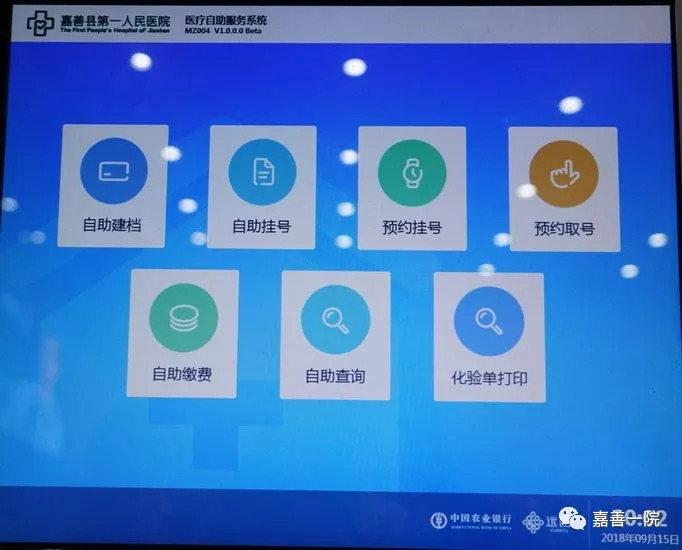Open wanghaisheng opened 5 years ago

https://www.cn-healthcare.com/article/20161220/content-488186.html 医院有了自助机 怎样让患者不继续往窗口挤?
https://www.ixueshu.com/document/bd8b8d31a6a2db09cf5a342f4ab350c1.html#pdfpreview 中国医疗情景下患者就医感知价值指标构成与分类探索——基于浙江省台州医院的实证研究
Patient Self Service HealthCare Kiosk
https://www.ncbi.nlm.nih.gov/pmc/articles/PMC6389701/ Understanding Customers’ Continuance Intentions Toward In-Lobby Self-Service Technologies
Self-service technologies in health-care: Exploring drivers for adoption https://www.sciencedirect.com/science/article/pii/S074756321830298X https://www.ixueshu.com/document/b11a8c5635d0c5d09e908a3c0d3d464d.html
探索创建自助服务体系,提升患者就医感受
https://www.ncbi.nlm.nih.gov/pmc/articles/PMC5546557/ Self-service technologies deployed in the health sector include multi-user health kiosks such as those for self-monitoring of blood pressure that are frequently located in pharmacies and grocery stores (Curran & Meuter, 2005; Meuter, Ostrom, Roundtree, & Bitner, 2000). Hospitals often deploy multi-user health kiosks to automate patient management services for admission, discharge, appointment scheduling, and patient check-in. They also leverage these technologies for the processing of co-payments, patient consent forms, and prescription refill requests, and for verification of insurance eligibility, often in different languages (Meuter, Ostrom, Roundtree, & Bitner, 2000; Soares et al., 2016).
Multi-user health kiosks present several P&S issues that need to be addressed The same characteristics that make these devices attractive for use in the self-service environment also render them vulnerable to P&S breaches (Günay, Erbuğ, Hekkert, & Herrera, 2014; Smith, 2008; Uhley, 2006). Owing to their quasi-portable and unattended nature, multi-user health kiosks are typically deployed in public places. This makes them susceptible to invasion of privacy by bystanders as well as intrusion attacks by malicious individuals for whom unsupervised access provides cover for launching repeated attempts to breach kiosk systems.
Most kiosk patrons do not need explicit IT or network privileges such as user names and passwords to initiate interaction with the kiosk. They instead use some form of generic log-on information, which makes it challenging for system administrators to manage or track user activities and protect against security threats. Kiosk users can also become victims of identity theft and fraud if they are oblivious to “shoulder surfing” by others while logging in or entering information (Ciampa, 2008; Craig, 2008; Kizza, 2013b; Smith, 2008; Uhley, 2006).
患者眼中的好医院
服务营销
7个维度32个指标

results of prior research (9) have shown that both perceived service value and perceived service quality dimensions should be incorporated into customer satisfaction models to provide a more complete picture of the drivers of satisfaction.
https://www.ncbi.nlm.nih.gov/pmc/articles/PMC6172529/ we know that the concept of perceived service value is the concept around which revolve both the benefits, such as the most frequently described perceived service quality and reputation and the costs in the form of prices, both monetary and non-monetary. On the other hand, customer satisfaction with performed services and customer loyalty are the most researched consequences of perceived service value.
Zeithaml’s definition (22) states that the perceived service value is a ratio between what you gain and what you have to sacrifice for it. When possible, patients chose those healthcare providers they perceive as valuable (16). Numerous researchers (23, 24, 25) have claimed that the perceived service value set by a patient represents an overall assessment of a health service, which is based on patients’ perceptions of what was gained and what was invested. As the consequences of perceived service value for patients, various authors have listed (26, 27, 28) patients’ satisfaction and loyalty.
http://dy.163.com/v2/article/detail/DQRRN3LG0511805E.html http://www.100ec.cn/detail--6449135.html https://www.jianshu.com/p/5d4626b4dce2?utm_campaign=haruki&utm_content=note&utm_medium=reader_share&utm_source=weibo [译]未来的客户忠诚度是无卡的(The future of customer loyalty is card free)
https://baike.1688.com/doc/view-d4437047.html 什么是Customer_perceived_value?



http://www.doc88.com/p-7367012528227.html 提高住院患者自助缴费机的使用率